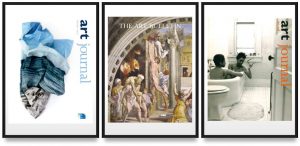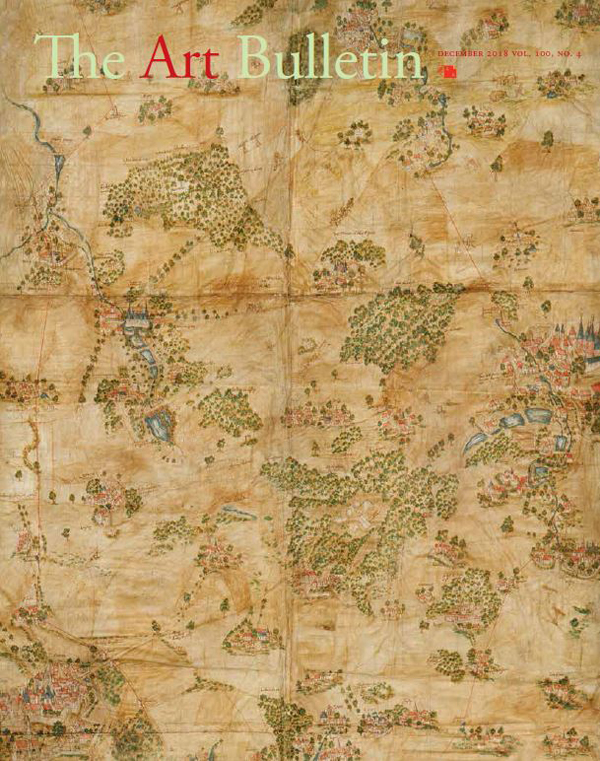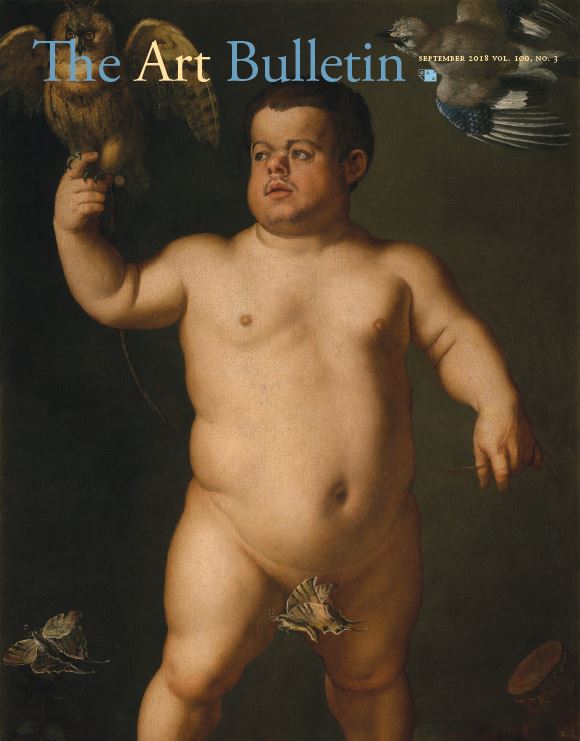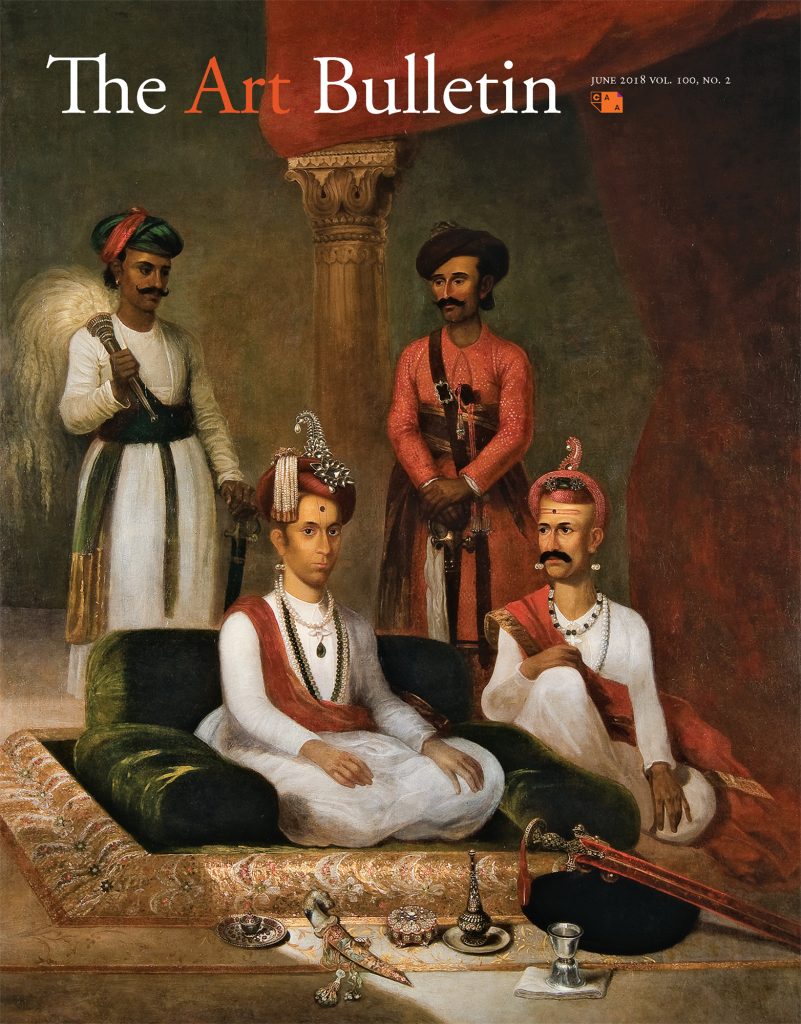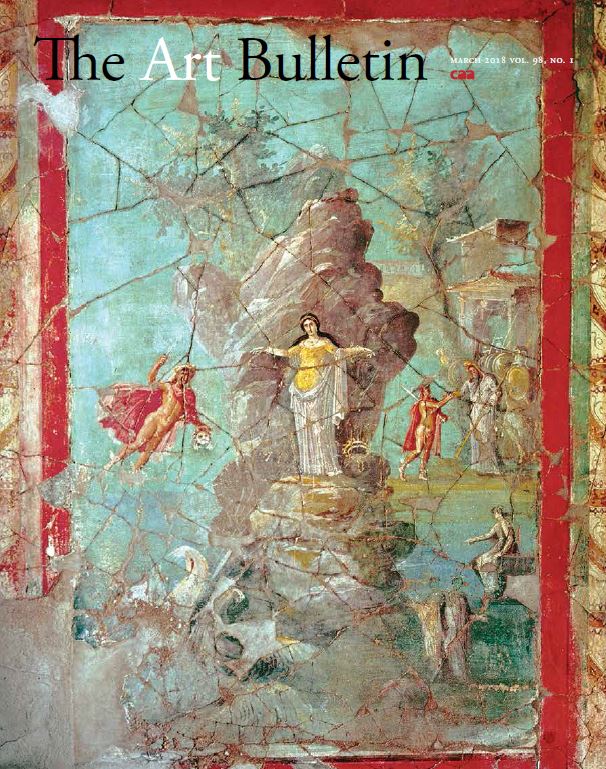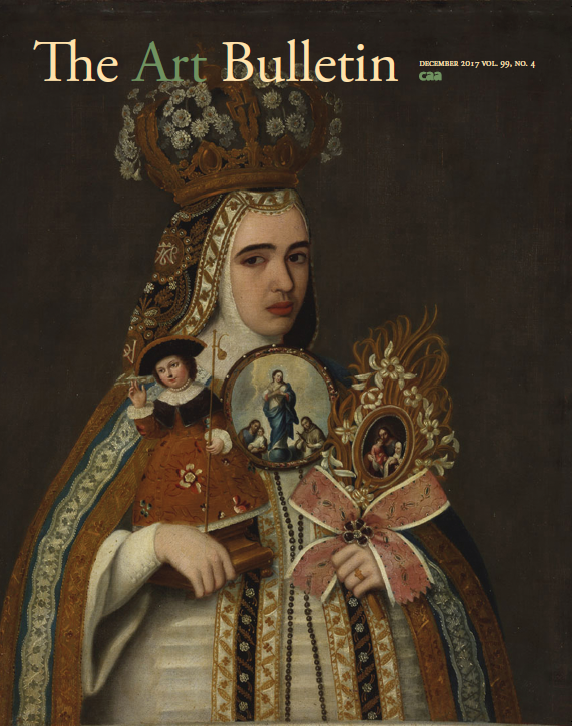CAA News Today
Celebrate Pride with CAA’s LGBTQ+ Article Collection
posted by CAA — June 13, 2019
Learn more about Art Journal and The Art Bulletin.
Serve on a CAA Editorial Board, Committee, or Jury
posted by CAA — March 20, 2019
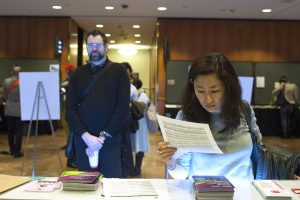
Attendees at the 2019 Annual Conference in New York. Photo: Ben Fractenberg
Each spring, members have the opportunity to provide critical service to the field and gain an inside view by volunteering to work on a CAA editorial board, committee, or jury.
Any member may self-nominate for the following positions or (after ascertaining interest) nominate another member. For more information, please click on the links below.
CURRENT OPPORTUNITIES
All deadlines for 2019 have passed.
CLOSED OPPORTUNITIES
Art Journal Open—Editor-in-Chief
Deadline: April 1
caa.reviews—Editor-in-Chief
Deadline: April 1
caa.reviews—Four Field Editors
Design History, Eighteenth-Century Art, Architecture and Urbanism, Theory and Historiography
Deadline: April 15
The Art Bulletin—Editorial Board Members
Deadline: April 15
Annual Conference—CAA Council of Readers
New this year, we’re asking members to serve a crucial role in shaping conference content.
Deadline: April 18
Annual Conference—Annual Conference Chair
Deadline: April 29
Annual Conference—Awards for Distinction Juries
Deadline: May 13
Millard Meiss Publication Fund—Jury Members
Deadline: May 13
Professional Development Fellowships in Art History and Visual Art—Jury Members
Deadline: May 13
Professional Committees—Seeking New Members
Committees: Design, Diversity Practices, Intellectual Property, Women in the Arts, Education, International, Museum, Professional Practices, Services to Artists, Student and Emerging Professionals
Deadline: September 18
The Art Bulletin Editorial Board Seeks New Members
posted by CAA — February 07, 2019
CAA invites nominations and self-nominations for two individuals to serve on the The Art Bulletin Editorial Board for a four-year term, July 1, 2019–June 30, 2023. The ideal candidate has published substantially in the field and may be an academic, museum-based, or independent scholar; institutional affiliation is not required. The Art Bulletin features leading scholarship in the English language in all aspects of art history as practiced in the academy, museums, and other institutions.
The editorial board advises The Art Bulletin editor-in-chief and assists by seeking authors, articles, and other content for the journal; performs peer review and recommends peer reviewers; may propose new initiatives for the journal; and may support fundraising efforts on the journal’s behalf. Members also assist the editor-in-chief to keep abreast of trends and issues in the field by attending and reporting on sessions at the CAA Annual Conference and other academic conferences, symposia, and events in their fields.
The Art Bulletin Editorial Board meets three times a year, with meetings in the spring and fall plus one at the CAA Annual Conference in February. The spring and fall meetings are currently held by teleconference, but at a later date CAA may reimburse members for travel and lodging expenses for New York meetings in accordance with its travel policy. Members pay travel and lodging expenses to attend the conference in February. Members of all editorial boards volunteer their services to CAA without compensation.
Candidates must be current CAA members in good standing and should not be serving on the editorial board of a competitive journal. Members may not publish their own work in the journal during the term of service. CAA encourages applications from colleagues who will contribute to the diversity of perspectives on The Art Bulletin Editorial Board and who will engage actively with conversations about the discipline’s engagements with differences of culture, religion, nationality, race, gender, sexuality, and access. Nominators should ascertain their nominee’s willingness to serve before submitting a name; self-nominations are also welcome. Please send a letter describing your interest in and qualifications for appointment, a CV, and your contact information to: Chair, The Art Bulletin Editorial Board, College Art Association, 50 Broadway, 21st floor, New York, NY 10004; or email the documents or inquiries to Joan Strasbaugh, CAA publications and program editor, at jstrasbaugh@collegeart.org.
Deadline: Monday, April 15, 2019
Explore the Latest Issue of The Art Bulletin
posted by CAA — December 18, 2018
Print copies of The Art Bulletin will arrive in mailboxes soon. Click here to explore the digital version.
TABLE OF CONTENTS
EDITOR’S NOTE
Owning, Claiming, and Representing Land
Nina Athanassoglou-Kallmyer
ARTICLES
Mastering the Landscape: Geometric Survey in Sixteenth-Century France
Anthony Gerbino
Shifting Panoramas: Contested Visions of Cuzco’s 1650 Earthquake
Patrick Thomas Hajovsky
Landscape and Iconicity: Proskynetaria of the Holy Land from the Ottoman Period
Pnina Arad
Entertaining War: Spectacle and the Great “Capture of Wuhan” Battle Panorama of 1939
Kari Shepherdson-Scott
REVIEWS
Olga Bush, Reframing the Alhambra: Architecture, Poetry, Textiles and Court Ceremonial
Patricia Blessing
Jennifer Raab, Frederic Church: The Art and Science of Detail
Katherine Manthorne
Not a member? Click here to join CAA and explore the issue in full.
Announcing Milette Gaifman and Lillian Lan-ying Tseng as Coeditors of The Art Bulletin
posted by CAA — December 06, 2018
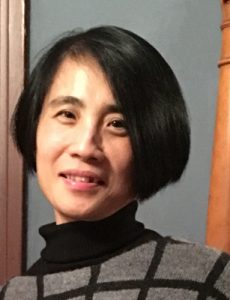
Lillian Lan-ying Tseng

Milette Gaifman
We’re pleased to announce the appointment of Lillian Lan-ying Tseng and Milette Gaifman as the new coeditors of The Art Bulletin. The appointment marks the first joint editorship in the 105-year history of the journal. The Art Bulletin is the flagship journal of art history, covering prehistoric to 21st-century art. Previous editors of The Art Bulletin have included H. W. Janson, George Kubler, Millard Meiss, and John Shapley, among many others. The Art Bulletin editorship rotates every three years.
“CAA believes in interdisciplinary practice and collaboration in all programs and publications. The Art Bulletin’s rich and long history as the journal of record for the art history field will only benefit from this new coeditor approach,” said Hunter O’Hanian, executive director of CAA. “Professors Tseng and Gaifman are highly respected in the field and will bring to the journal diverse experiences and expertise that will be reflected in The Art Bulletin over the years of their editorship.”
Lillian Lan-ying Tseng is associate professor of East Asian art and archaeology at the Institute for the Study of the Ancient World at New York University and specializes in Chinese art and archaeology. The mediums she investigates are diverse, including city planning, architecture, sculpture, painting, calligraphy, textile, and bronze objects. The timeframes of her publications cluster in early imperial China, later imperial China, and the twentieth century. The issues she explores concern not only art objects but also broader contexts in which they are situated, such as how artisans appropriated scientific knowledge for religious purposes, how memory facilitated the creation, circulation, and reception of artifacts, and how political intentions or situations stimulated the development of visual and material cultures. She is the author of Picturing Heaven in Early China (Harvard University Press, 2011). She is currently at work on two book projects: one looks into the reception of antiquity and its impact on visual production in 18th-century China, while the other examines frontiers and visual imaginations in Han China.
“Art and visual culture are central elements in the study of ancient civilizations, as they are of all periods of history,” said Alexander Jones, Leon Levy Director and Professor of the Exact Sciences in Antiquity, Institute for the Study of the Ancient World, NYU. “The Institute for the Study of the Ancient World is proud and delighted on the occasion of Lillian Tseng’s appointment as coeditor of The Art Bulletin.”
Milette Gaifman is associate professor of classics and history of art at Yale University. She is a scholar of ancient art and archaeology, focusing primarily on Greek art of the Archaic and Classical periods. At Yale, she is jointly appointed in the departments of Classics and History of Art. Her research interests include the interaction between visual culture and religion, the variety of forms in the arts of antiquity, the interactive traits of various artistic media, and the reception of Greek art in later periods. In addition, her scholarship explores the historiography of the academic disciplines of art history and archaeology. She is the author of Aniconism in Greek Antiquity (Oxford University Press, 2012), and The Art of Libation in Classical Athens (Yale University Press, 2018); and coeditor of “Exploring Aniconism,” a thematic issue of Religion (2017), and “The Embodied Object in Classical Art,” a special issue of Art History (June 2018).
“It is a significant honor for Yale and for the field of Classical Greek Art that Milette Gaifman has been appointed co-editor of The Art Bulletin. Successor in this role to such hallowed Yale luminaries as Creighton Gilbert and Walter Cahn, Milette will bring the same dynamism and intellectual energy to the position that can be seen in her publications and her hugely successful teaching in our Department,” said Timothy Barringer, Chair and Paul Mellon Professor in the Department of the History of Art at Yale University. “Author of two path-breaking books, Milette is a scholar of wide-ranging tastes and interests, who insists on methodological rigor but also enjoys crossing scholarly borders and dismantling the shibboleths of orthodox thinking. Working with our respected former colleague, Lillian Tseng, she will doubtless bring a new, iconoclastic and perhaps occasionally irreverent spirit to an august journal.”
Explore the Latest Issue of The Art Bulletin
posted by CAA — October 22, 2018
Print copies have been shipped. Click here to explore the digital version.
TABLE OF CONTENTS
Touch and Remembrance in Greek Funerary Art
Nathan T. Arrington
Iconoclasm’s Legacy: Interpreting the Trier Ivory
Paroma Chatterjee
Ingenuity in Nuremberg: Dürer and Stabius’s Instrument Prints
Alexander Marr
Portrait of a Renaissance Dwarf: Bronzino, Morgante, and the Accademia Fiorentina
Robin O’Bryan
Decolonizing Modernism: Robert Henri’s Portraits of the Tewa Pueblo Peoples
Allan Antliff
REVIEWS: Antiquities and Heritage
Marisa Anne Bass, Jan Gossart and the Invention of Netherlandish Antiquity
Stephanie Porras
Peter N. Miller, History and Its Objects: Antiquarianism and Material Culture since 1500
Ulf R. Hansson
Zeynep Çelik, About Antiquities: Politics of Archaeology in the Ottoman Empire
Frederick N. Bohrer
Mrinalini Rajagopalan, Building Histories: The Archival and Affective Lives of Five Monuments in Modern Delhi
Santhi Kavuri-Bauer
Not a member? Click here to join CAA and explore the issue in full.
Explore the Latest Issue of The Art Bulletin
posted by CAA — July 19, 2018
Print copies of The Art Bulletin will arrive in mailboxes this week. Click here to explore the digital version.
TABLE OF CONTENTS
The Exuding Wood of the Cross at Isenheim
Gregory C. Bryda
Watteau, through the Cracks
Oliver Wunsch
“Take All of Them”: Eclecticism and the Arts of the Pune Court in India, 1760–1800
Holly Shaffer
The Unanticipated Politics of Heritage in 1830s France: A Walk-In Diorama
Katherine Fischer Taylor
Pasteup Pictures: Ed Ruscha’s Every Building on the Sunset Strip
Jennifer Quick
REVIEWS: Screens and Projections
Nicholas Bauch, Enchanting the Desert: A Pattern Language for the Production of Space
Ellery E. Foutch
Armin Medosch, New Tendencies: Art at the Threshold of the Information Revolution (1961–1978)
Adair Rounthwaite
Hanna B. Hölling, Paik’s Virtual Archive: Time, Change, and Materiality in Media Art
Gregory Zinman
Erika Balsom, After Uniqueness: A History of Film and Video Art in Circulation
Kevin Hatch
Meredith Hoy, From Point to Pixel: A Genealogy of Digital Aesthetics
Kate Mondloch
Not a member? Click here to join CAA and explore the issue in full.
Explore the Latest Issue of The Art Bulletin
posted by CAA — May 01, 2018
A spectacular fresco from early first-century Pompeii is featured on the cover of the March 2018 issue of The Art Bulletin. Drawing on a palette of aqua, yellow, and deep red, it depicts Perseus rescuing Andromeda from captivity on a rocky promontory. The fresco appears in Nathaniel B. Jones’s essay “Starting from Places: Continuous Narration and Discontinuous Perspectives in Roman Art,” which explores how the painters of the time represented multiple temporal moments in a single visual field.
Two essays also featured in the issue examine diverse medieval pilgrimage practices: Conrad Rudolph considers the visual tour guides used at European sites, notably Canterbury, and how they enhanced the social and public reception of works of art; Talia J. Andrei investigates the pilgrimage mandala paintings of Japan’s Ise shrines and the ways they allude to the power and authority of individual Buddhist temples. In the sixteenth-century miniature paintings that depict the ceremonial presentation of gifts from Safavid shahs to Ottoman sultans, Sinem A. Casale locates an unusual opportunity to assess the agency of gifts through their visual representation rather than their materiality. John Ott finds that Hale Woodruff’s six-panel mural of the early 1950s, The Art of the Negro, presents an inclusive, nonlinear visual history of global art that also destabilizes conventional narratives of the origins of modernism. The role of photography during the 1980s human-rights conflicts between the United States and Nicaragua is the subject of an essay by Erina Duganne, who focuses on postmodernist critique of photography as revealed in a 1984 exhibition intended to counter misrepresentations in the news media.
The reviews section, on the theme “Transatlantic,” features recent books on images and objects from the New World in Medici Florence, cross-cultural encounters in sixteenth-century Peru, a queer reading of the formation of the modernist canon, and contemporary black diaspora art around the Atlantic.
CAA sends print copies of The Art Bulletin to all institutional and individual members who choose it as a benefit of membership. The digital version at Taylor & Francis Online is available to all CAA individual members regardless of their print subscription choice.
Want to see more? Join CAA today and explore the March issue in full.
Call for Nominations for CAA Publications
posted by CAA — February 06, 2018
Self-nominations and nominations are now open for several positions with CAA publications. Click the links below to learn more.
THE ART BULLETIN
Call for Editor-in-Chief, The Art Bulletin
The Art Bulletin Editorial Board invites nominations and self-nominations for the position of editor-in-chief for a three-year term: July 1, 2019–June 30, 2022, with service as incoming editor designate, July 1, 2018–June 30, 2019, and as past editor, July 1, 2022–June 30, 2023. The candidate should have published substantially in the field and may be an academic, museum-based, or independent scholar; institutional affiliation is not required. The Art Bulletin features leading scholarship in the English language in all aspects of art history as practiced in the academy, museums, and other institutions. From its founding in 1913, the quarterly journal has published, through rigorous peer review, scholarly articles and critical reviews of the highest quality in all areas and periods of the history of art. Click here to learn more.
Deadline: Monday, April 2, 2018; finalists will be interviewed on Friday, May 4.
ART JOURNAL
Art Journal Seeks Reviews Editor – deadline extended!
The Art Journal Editorial Board invites nominations and self-nominations for the position of reviews editor for a three-year term: July 1, 2019–June 30, 2022 (with service as incoming reviews editor designate, July 1, 2018–June 30, 2019). The candidate may be an artist, art historian, art critic, art educator, curator, or other art professional; institutional affiliation is not required. Art Journal, published quarterly by CAA, is devoted to twentieth- and twenty-first-century art and visual culture. Click here to learn more.
Deadline extended! New deadline is: Tuesday, April 17, 2018; finalists will be interviewed on Thursday, May 3.
Art Journal Editorial Board Seeks New Members
CAA invites nominations and self-nominations for two individuals to serve on the Art Journal Editorial Board for a four-year term: July 1, 2018–June 30, 2022. Candidates may be artists, art historians, art critics, art educators, curators, or other art professionals; institutional affiliation is not required. Art Journal, published quarterly by CAA, is devoted to twentieth- and twenty-first-century art and visual culture. Click here to learn more.
Deadline: Monday, April 16, 2018.
CAA.REVIEWS
caa.reviews Editorial Board Seeks Candidates
CAA invites nominations and self-nominations for two individuals to serve on the caa.reviews Editorial Board for four-year terms, July 1, 2018–June 30, 2022. Candidates may be artists, art historians, art critics, art educators, curators, or other art professionals with stature in the field and experience writing or editing books and/or exhibition reviews; institutional affiliation is not required. The journal also seeks a librarian to serve in an ex officio capacity to advise the editorial board on technical and distribution issues. Click here to learn more.
Deadline: Monday, April 16, 2018.
caa.reviews Seeks TEN Field Editors – deadline extended!
CAA invites nominations and self-nominations for TEN individuals to join the caa.reviews Council of Field Editors for a three-year term, July 1, 2018–June 30, 2021. An online journal, caa.reviews is devoted to the peer review of new books, museum exhibitions, and projects relevant to art history, visual studies, and the arts. Click here to learn more.
Deadline extended! New deadline is: Tuesday, May 1, 2018.
Explore the Latest Issue of The Art Bulletin
posted by CAA — January 30, 2018
The portrait of a lavishly dressed young nun, an example of a genre of the “crowned nun,” appears on the cover of the December 2017 issue of The Art Bulletin. Baroque in several senses of the word, the painting by José de Alcíbar dates from ca. 1795 and appears in Cristina Cruz González’s essay “Beyond the Bride of Christ: The Crucified Abbess in Mexico and Spain.”
In other essays featured in the issue: Jenifer Neils assesses the Apollo Sauroktonos, the bronze statue of a boy killing a lizard, traditionally attributed to the fourth-century BCE sculptor Praxiteles, and concludes that the work is neither by Praxiteles nor of the mid-fourth century. Alice Isabella Sullivan relates the miraculous deliverance of Constantinople depicted in sixteenth-century Moldavian church murals to contemporary struggles over Ottoman rule in Eastern Europe. Jessica Maratsos examines the artistic tokens of friendship exchanged between Michelangelo and his patron Vittoria Colonna, and the dissemination of copies of these works in paint, manuscript, and print. Jennifer Van Horn considers the iconoclasm of enslaved and newly freed men and women during the American Civil War, who defaced and repurposed portraits of their former masters as a means of resisting dehumanization and asserting their own agency. Harmon Siegel finds that the interiors of Louise Nevelson’s homes, filled with dark sculptures and assemblages, borrow a page from gothic literature, critiquing domesticity as a trap and troubling the stability of modernist claims to autonomy.
The reviews section, on the theme of “Architectural Networks,” features recent books on the architecture of the Roman world, medieval Spain, Japan, the Caribbean, and the contemporary mosque.
Finally, the art historians Ewa Lajer-Burcharth and Tamar Garb present tributes to the pioneering historian Linda Nochlin, who died in October.
CAA sends print copies of The Art Bulletin to all institutional members and individual members who choose it as a benefit of membership. The digital version at Taylor & Francis Online is available to all CAA individual members regardless of their print subscription choice.



